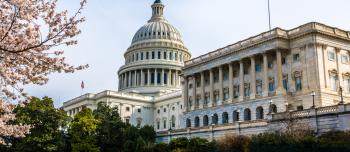On November 20, the Department of Health and Human Services (HHS) released several long-awaited proposed regulations implementing private insurance market reforms relating to essential health benefits (EHB), actuarial value, fair insurance premiums and employer wellness programs. The regulations are the result of collaboration among various states, small business owners, consumers and health insurance issuers. Together they will reform what health insurance plans cover and charge enrollees for premiums starting in 2014.
As a reminder, the EHB are 10 broad categories of services that all new individual and small group plans will be required to cover in 2014. The EHB proposed rule builds on the EHB Bulletin the Department of Health and Human Services (HHS) released in December 2011 and directs states to select a benchmark plan among 10 choices already existing in the state. About half of the states have already selected a benchmark plan; the remainder have until December 26, 2012, to do so. States that don’t choose one will end up with the default plan, which is the largest small group plan in the state.
The proposed rule largely codifies the policies included in the EHB Bulletin, but there are major changes related to prescription drug coverage. The bulletin originally proposed that plans could include only one drug per category or class in their formularies. NHF, among many other patient advocacy groups and other stakeholders, objected to this, arguing that such a restricted formulary is insufficient for patients. The proposed rule changes this policy and requires plans cover the same number of drugs for each category or class as the benchmark plan, or at least one per category or class if the benchmark formulary doesn’t include it. Further, the proposed rule requires plans to have a process by which patients can access clinically appropriate drugs not on the formulary. Both policies represent more generous coverage for patients than was in the bulletin, though the new policy does not go as far as some advocates had hoped.
HHS also posted more detailed information about the benchmark plans in each state (either the plan the state chose or the default, if one has not been selected). Read more on state-specific information on the plans, including any treatment limits and the number of drugs in the formulary by class. This Web site can help state advocates further evaluate their benchmark plans.
HHS has already received more than 11,000 comments on the regulations and welcomes additional public comments. The deadline to submit comments is Wednesday, December 26, so there is still an opportunity for advocates to influence EHB policy. If additional states select plans before the deadline, there may be opportunities on the state level as well.
NHF will submit comments supporting the expanded formulary, highlighting the benefits for people with bleeding disorders.





